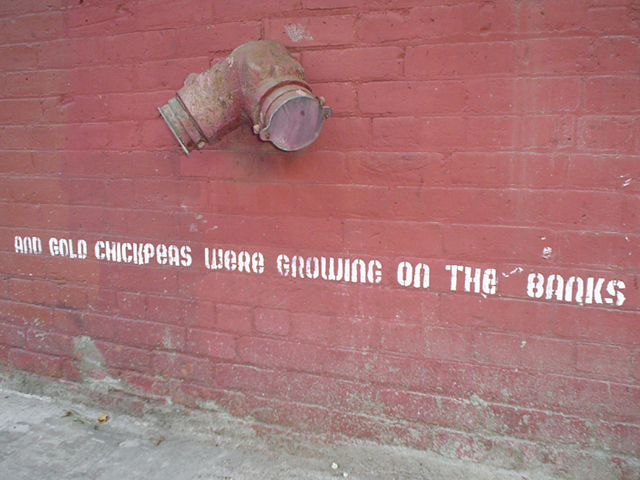You Burn Me
A graffito is defined in the dictionary as “a crude drawing or inscription, as on a wall.” A silent utterance, it can be a declaration of love, a political statement, a proof of existence, or a secret message.
Sometimes it’s even wise or funny. A bit of graffiti is often a fragment of a fuller thought known completely only to the person who made the mark. In the project “you burn me” I write various fragments from the ancient Greek poet Sappho on buildings in DUMBO, bringing them alive in the context of our urban environment as graffiti.
I’ve chosen Sappho’s poems because they come to us only as fragments. The full poems are forever lost. Just as the graffito’s mark is missing information so are the Sapphic fragments. We cannot know the full poem, nor for that matter do we know much about the poet. Ann Carson, the poet who translated the fragments in If Not, Winter Fragments of Sappho (2002) describes the rips and tears of papryrus where words have disappeared as the “free space of imaginal adventure.” I think an imaginary free space also lingers around the graffito’s mark, be it a tag or phrase. Marking walls with Sapphic fragments gives us a new opportunity to contemplate her words (and those that are missing) as if they are bubbling up from the past to voice themselves again in the present, losing none of their mystery.
